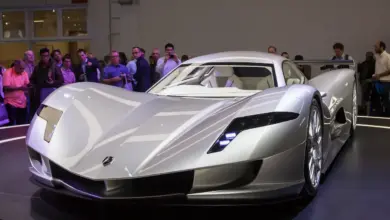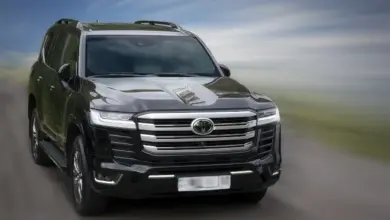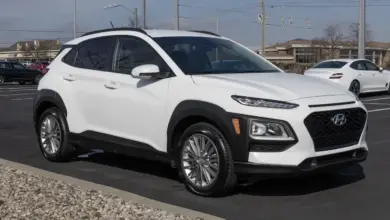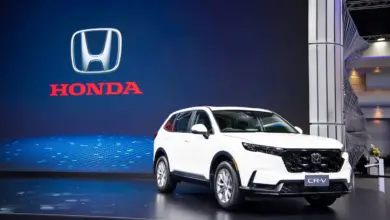7 Most Reliable Hybrid Cars In Australia
7 Most Reliable Hybrid Cars In Australia Reviews
As an Australian looking to buy a new hybrid car, reliability is one of my top concerns. With high fuel prices and environmental concerns, hybrids are becoming increasingly popular down under. However, not all hybrids are created equal when it comes to dependability.
Through my research, I’ve identified the 7 most reliable hybrid cars available on the Australian market in 2023. Whether you’re looking for a compact hatchback or a midsize sedan, this list has a reliable hybrid to fit your needs.
All of these vehicles achieve excellent reliability ratings and offer the efficiency of electric motors paired with gas engines. Keep reading to see my picks for the hybrids you can count on to go the distance.
Difference Between PHEVs and Regular Hybrid Cars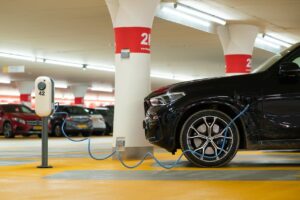
When looking at hybrid vehicles, you’ll come across two main types – regular hybrids and plug-in hybrid electric vehicles (PHEVs).
While both offer the efficiency and environmental benefits of pairing electric and gas motors, there are some key differences between these hybrid technologies.
How Regular Hybrids Work?
Regular hybrids, like the Toyota Prius, use a gasoline engine alongside one or more electric motors. The battery pack in a regular hybrid is relatively small and is charged through regenerative braking and by the gas engine.
This allows the car to switch seamlessly between the electric and gas motors, with the electric motor providing extra efficiency and power when needed.
How PHEVs Work?
PHEVs take the hybrid concept a step further. They have a much larger battery pack that can be charged by plugging into an electric outlet or charging station.
charging station.
This allows PHEV’s to drive in pure electric mode for a certain range – usually around 30-40 miles – before the gas engine is needed. Depending on the model, some PHEVs can drive in electric-only mode at highway speeds.
The advantage of a PHEV is that you can potentially drive without using any gasoline on short trips and commute if you regularly charge the battery.
This allows PHEVs to achieve even better fuel efficiency than regular hybrids. However, PHEV batteries and electric motors make them more expensive than comparable regular hybrids.
Choosing Between Hybrid Options
When choosing between a regular hybrid and a PHEV, consider your driving habits. If you take a lot of short trips and have access to charging, a PHEV allows you to maximize electric driving.
But regular hybrids offer excellent efficiency and savings on gas as well, without the higher sticker price. Both types of hybrids are smart options for drivers looking to save on fuel costs and reduce their environmental impact.
7 Most Reliable Hybrid Cars In Australia
Whether you’re looking for a small commuter car or a family hauler, this list has a tried-and-true hybrid to suit different needs and budgets.
The following vehicles achieve top marks for hybrid reliability and offer the right balance of efficiency, practicality, and value. Read on to see which hybrids deliver peace of mind along with fuel savings.
Kia Sportage Hybrid
Making its debut for the 2023 model year, the Kia Sportage Hybrid represents the first time this popular compact SUV has been available with an electrified powertrain. By combining the Sportage’s family-friendly strengths and practicality with improved fuel efficiency, the Sportage Hybrid becomes a very compelling option among small crossover SUVs.
electrified powertrain. By combining the Sportage’s family-friendly strengths and practicality with improved fuel efficiency, the Sportage Hybrid becomes a very compelling option among small crossover SUVs.
Power comes from a 1.6-liter turbocharged four-cylinder engine paired with an electric motor and battery pack, providing a solid 227 total system horsepower. Even with the power of a turbo engine, the Sportage Hybrid still achieves excellent EPA fuel economy estimates of 43 mpg combined with front-wheel drive or 38 mpg combined with AWD.
Inside, the Sportage Hybrid features a modern cabin loaded with tech like a 12.3-inch digital instrument cluster and available 12.3-inch touchscreen display.
Specifications
- 1.6L turbocharged engine and electric motor
- 227 total system horsepower
- Up to 43 mpg combined fuel economy
- 39.6 ft. turning circle
- 7.3 inches of ground clearance
Pros
- Roomy, modern cabin with ample tech
- Smooth, quiet ride quality
- Excellent mpg for a compact crossover SUV
- More cargo space than RAV4 Hybrid and CR-V Hybrid
Cons
- Only front-wheel drive on base LX trim
- Handling is not as nimble as some competitors
Honda CR-V Hybrid
Fully redesigned for 2023, the Honda CR-V Hybrid represents the latest generation of this popular compact crossover SUV. The CR-V Hybrid pairs the practicality and comfort that have made the CR-V a segment leader with the improved fuel efficiency of hybrid power.
Under the hood is a 2.0-litre four-cylinder engine working together with electric motors to produce 204 total system horsepower while achieving 40-43 mpg city/highway.
The CR-V Hybrid’s cabin offers exceptional passenger and cargo space for the compact SUV class. Ride quality is smooth and controlled, thanks to the available adaptive dampers.
A long list of tech features and driver aids come standard, including collision mitigation braking, lane keeping assist, and a 7-inch touchscreen with Apple CarPlay and Android Auto. Overall, the CR-V Hybrid sets the benchmark for refinement, space, and fuel-efficient performance in its class.
Specifications
- 2.0L 4-cylinder engine + electric motors
- 204 total system horsepower
- 40-43 mpg city/highway
- 76.5 cubic feet maximum cargo space
- 39.3 cubic feet of rear seat cargo space
Pros
- Spacious, upscale cabin
- Strong fuel economy estimates
- Balanced ride and handling
- A generous list of standard features
Cons
- CVT tends to drone at higher speeds
- The tight rear middle seat
Jeep Grand Cherokee Plug-in Hybrid
Joining the Grand Cherokee lineup for 2022, the Grand Cherokee 4xe Plug-In Hybrid brings electrification to Jeep’s midsize SUV.
The Grand Cherokee Plug-In pairs a 2.0-liter turbocharged engine with two electric motors, allowing an estimated 26 miles of electric driving before the gas engine is needed. The total system output is 375 horsepower, allowing the Grand Cherokee 4xe to tow up to 6,000 pounds.
The PHEV powertrain does not reduce passenger or cargo space compared to the standard Grand Cherokee.
Estimated at 23 mpg combined with the hybrid system, the 4xe brings a noticeable improvement over the standard V6 and V8 models. Off-road ability stays intact, too, evidenced by the Trailhawk trim offered exclusively as a 4xe.
New for 2023 is a larger 10.1-inch touchscreen offered on some trims. The downsides of the plug-in Grand Cherokee include its high price tag and only marginally better mpg than the V6 model. But for short all-electric commutes plus Grand Cherokee’s legendary capability, the 4xe is a smart electrified choice.
Specifications
- 2.0L turbocharged engine + two electric motors
- 375 total system horsepower
- 26-mile electric range
- 23 mpg combined fuel economy
- 6,000 lb max towing capacity
Pros
- The useful electric range for commuting
- Retains standard Grand Cherokee capability
- Can tow heavy loads as a plug-in hybrid
- Cabin and cargo space uncompromised
Cons
- Much more expensive than standard models
- Marginal mpg increase over V6
Mazda MX-30 Hybrid
The Mazda MX-30 Hybrid stands out for its stylish exterior design but falls short in a few key areas. Technically not a true hybrid, the MX-30 uses a mild hybrid system pairing a 2.0-litre gas engine with a small electric motor.
Total output is a modest 114kW and fuel economy is lower than expected for a vehicle wearing hybrid badges. The MX-30 Hybrid is closely related to the CX-30 crossover but trades the practical rear doors for a coupe-like body style.
Inside, the MX-30 offers decent backseat room thanks to its tall roofline. The premium over the CX-30 is minimal for the stylish exterior. However, ride quality and powertrain refinement leave something to be desired, especially considering the MX-30’s premium pricing.
There’s no turbo engine option like the CX-30. Ultimately, the MX-30 Hybrid sacrifices functionality for form. Shoppers wanting a true SUV hybrid with better mpg have many better options. Those seeking style and green credibility are better served waiting for the all-electric MX-30 coming later.
Specifications
- 2.0L gas engine + electric motor
- 114kW combined output
- 150g/km CO2 emissions
- 5-star ANCAP safety rating
- 6.4L/100km combined fuel economy
Pros
- Eye-catching coupe-inspired design
- Surprisingly good rear seat room
- Minimal price increase over CX-30
- Lower emissions than gas-only models
Cons
- Underwhelming powertrain performance
- Mediocre real-world mpg
Nissan Qashqai e-Power
The Nissan Qashqai e-Power represents the electrified version of Nissan’s popular compact SUV. Using a unique series hybrid system, the e-Power combines a 1.5L gas engine with a 140kW electric motor, 2.1kWh battery, and regenerative braking.
The gas engine acts solely as a generator to power the battery and motor, never driving the wheels directly. This allows most driving to be done using the electric motor, with the gas engine kicking in seamlessly when needed.
Nissan says this series hybrid setup improves efficiency in urban driving, where the Qashqai e-Power can run in near-silent EV mode frequently. Regenerative braking also helps maximize range. The e-Power will only be offered in top-trim ST-L and Ti specifications when it launches, carrying an estimated $2,500-$5,000 premium over equivalent petrol models.
Inside, the e-Power shares the standard Qashqai’s interior space and techs like the digital dash and touchscreen.
New EV mode and e-Pedal switches allow drivers to maximize electric driving. For shoppers wanting SUV practicality with some electrification, the unique e-Power drivetrain gives the Qashqai green credentials. We’ll see if real-world driving lives up to its efficiency promises.
Specifications
- 1.5L gas generator engine
- 140kW electric motor
- 2.1kWh battery pack
- Regenerative braking
- e-Pedal and EV mode
Pros
- Seamless hybrid driving experience
- Potentially efficient urban commute use
- Practical SUV interior space
- Premium features on high-end trims
Cons
- Limited all-electric range
- Higher price than standard Qashqai
Peugeot 308 GT Sport
The Peugeot 308 GT Sport Plug-In Hybrid brings electrified power to Peugeot’s stylish small car. Combining a 1.6L turbocharged gas engine and 81kW electric motor, Peugeot estimates the 308 GT Sport PHEV can drive up to 60km in pure EV mode when fully charged.
The handsome hatchback exterior houses a distinctive interior featuring Peugeot’s unique low-set steering wheel and digital instrument panel.
Priced from $64,990 before on-roads, the 308 PHEV commands a substantial $16,000 premium over petrol variants. Real-world EV driving range is likely to fall short of the 60km claim.
The plug-in powertrain also adds considerable weight over regular 308s, dulling acceleration, and dynamics. Peugeot’s love-it-or-hate-it cockpit ergonomics remain divisive as well.
For buyers wanting a stylish, premium-feeling hatchback with a touch of electrification, the 308 PHEV makes a statement.
But its high price, hit-or-miss EV driving, and controversial interior layout limit its appeal compared to cheaper 308 petrol models and true EV rivals. Test driving is advised to see if its strengths outweigh its compromises.
Specifications
- 1.6L turbocharged gas engine
- 81kW electric motor
- Up to 60km EV range (claimed)
- Combined 165kW power output
- The 10-inch digital instrument panel
Pros
- Elegant, upscale exterior styling
- Handcrafted-look cabin materials
- Useful real-world EV range when operational
- Lower emissions than petrol variants
Cons
- Much pricier than petrol models
- Real-world EV range may disappoint
Lexus RX Hybrid
Fully redesigned for 2023, the Lexus RX 350h represents the new hybrid model in the popular RX luxury SUV lineup. Switching from the previous V6 hybrid powertrain, the RX 350h now uses a 2.5L 4-cylinder engine paired with Lexus’ hybrid drive system.
This improves fuel economy while delivering similar acceleration to the old RX 450h hybrid. The new RX also brings updated tech and safety features, including cloud-based navigation and hands-free driving assistance for traffic jams.
Inside, the RX 350h provides a roomy, comfortable cabin with standard leather upholstery and power-adjustable heated front seats. The rear seat is spacious with generous legroom.
Cargo space increases slightly over the previous RX. With its smooth powertrain, compliant suspension, and a hushed interior, the RX prioritizes passenger comfort over sporty handling. For an engaging driving experience, the new RX 500h is the one to get.
The RX retains its position as the most popular Lexus, appealing to luxury buyers who appreciate its combination of comfort, quality, and hybrid efficiency.
For shoppers wanting those traits in a two-row midsize SUV, the 2023 RX 350h has no direct hybrid rivals beyond the pricier BMW X5 xDrive45e plug-in hybrid.
Specifications
- 2.5L 4-cylinder hybrid engine
- 243 combined horsepower
- Up to 33 mpg combined estimate
- Optional hands-free driving assist
- Standard leather upholstery
Pros
- Smooth, quiet hybrid powertrain
- Roomy, upscale cabin
- Improved mpg over the previous model
- Cutting-edge tech and safety features
Cons
- Middling cargo space for class
- Ride comfort prioritized over handling
Buyer’s Guide for Finding A Reliable Hybrid Car
Hybrid cars offer great fuel efficiency along with the convenience of a gas engine for longer trips. But not all hybrids are created equal when it comes to dependability and longevity. Follow this buyer’s guide to help find a reliable hybrid that will go the distance.
Research Reliability Ratings
The first step is researching reliability ratings and reviews. Resources like J.D. Power dependability scores, Consumer Reports owner satisfaction, and sites detailing repair records can give insight into real-world hybrid reliability. Narrow down your choices to models with a proven track record.
Prioritise Established Hybrid Systems
Stick with hybrids from automakers with years of experience engineering electrified powertrains. Toyota’s Synergy Drive and Ford’s hybrid systems have over 15 years of refinement. Newer systems from manufacturers just entering the hybrid game may not match that maturity and smoothness.
Consider Mileage and Battery Age
For used hybrids, lower mileage examples will have less wear. Batteries typically last 8-10 years, so avoid older hybrids unless the battery was recently replaced. Have a dealer check battery health.
Get a Pre-Purchase Inspection
A hybrid-savvy mechanic should inspect the car before purchase, checking for leaks, loose connections, and corrosion in the battery and electrical systems. Test drive and listen closely for noises indicating potential hybrid faults.
Check Warranty Coverage
Hybrid components like batteries and motors should be covered for 8 years/100,000 miles minimum. Extended warranties can provide added peace of mind but check what’s covered. Following the above steps will help you find a reliable hybrid that meets your needs and lasts for years to come.
Click here if an electric flying car is more your style
Conclusion
With high fuel prices and environmental concerns, hybrid vehicles are surging in popularity among Australian drivers. Having a reliable electric vehicle is essential to ensure you don’t end up forking out money fixing and maintaining it.
We covered a range of vehicles, from small hatchbacks to midsize SUVs, highlighting dependable hybrids to suit different lifestyles and budgets. Key factors like real-world fuel economy, driving refinement, passenger space, and value were considered.

